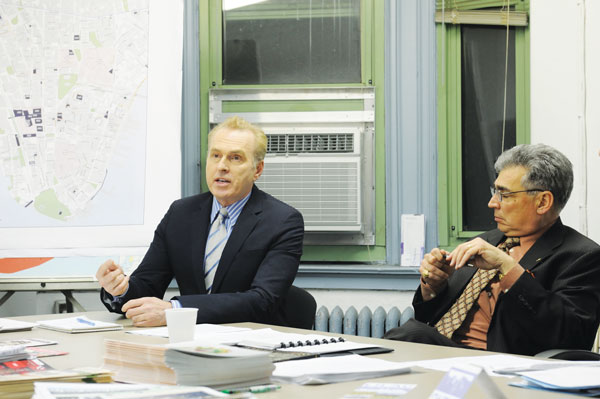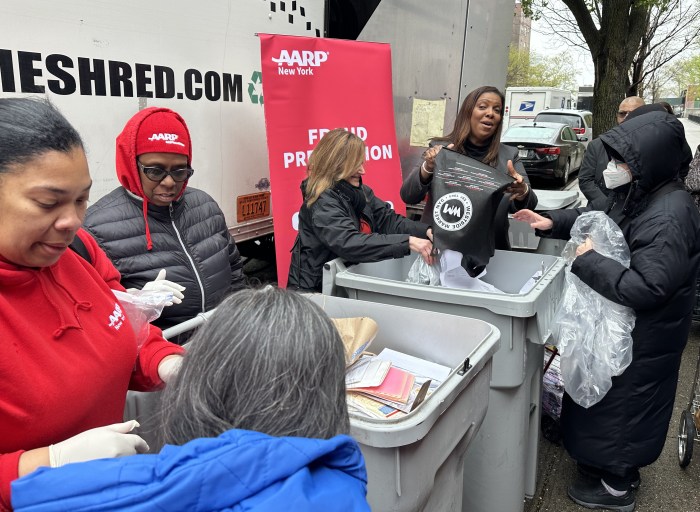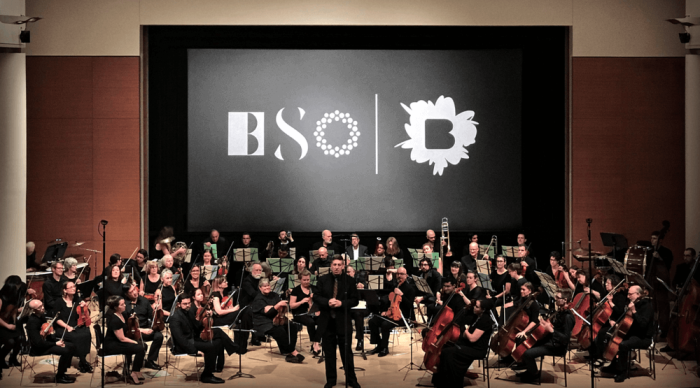
John Fratta, chair of C.B. 1’s Seaport Committee, said that he, C.B. 1 chair Julie Menin and Paul Hovitz, a member of the Seaport Committee, met with Howard Hughes reps and saw some plans for a structure that would replace the current mall. “They’re lowering the building,” said Fratta. “They’re going to make it all glass so no matter where you are on Pier 17, you’re going to have an unobstructed view of the Brooklyn Bridge.”
At the Seaport Committee’s meeting on Dec. 19, Fratta said there would be stores in the building, but they would not be chain stores, according to members of the Howard Hughes development team.
“They are going to be coming to our committee,” Fratta said, “ I believe they said, in a couple of months so we’re looking at probably February or March. But they were very clear – it’s just for Pier 17. We asked them for a master plan. We know what you want to do for Pier 17 and it sounds very sexy and everything else. What about the rest of the Seaport? They claim that because of the economic crisis that we’re in, they’re not ready to move on anything other than Pier 17.”
Howard Hughes Corp. owns, manages and develops commercial, residential and mixed-use real estate throughout the United States. It is a successor to General Growth Properties, which wanted to erect a high-rise building on Pier 17 and a 495-foot-tall hotel/condo tower on a lot just outside the landmarked Seaport district. General Growth wanted to move the historic Tin Building to make room for these structures but its bankruptcy in 2009 scuttled those plans.
However, the memory of that near miss still makes those who opposed General Growth’s vision very nervous.
At the Seaport Committee meeting, Robert LaValva, founder of the New Amsterdam Market on South Street said, “You see that time and time again there were markets on the water and over time, one replaced the other. This is an iconic site for the City of New York. It has a deep history and has a continuity of use over four centuries.”
He worries that the wrong kind of development would destroy the unique, historic character of the Seaport.
Currently part of the Seaport is landmarked by the New York Landmarks Preservation Commission, which means that any proposed development would have to pass muster with that commission. The north side of Pier 17, which once was Pier 18, is not landmarked and is therefore vulnerable to development even though it’s on the National Register of Historic Places. The New Market building, once used by the fishmongers of the Fulton Fish Market, is in the unlandmarked area. LaValva would like to use that and the Tin Building to house part of the New Amsterdam Market so that it could operate year round.
“It may be premature, but down the road we should start looking at a resolution urging or demanding, really, that those stalls be used for this purpose so we don’t have to worry about something else coming in over there,” Fratta said. “We know how important it is to the community.”
He recalled the former role of the fish market in providing jobs for people who didn’t have much education. “Unfortunately, when we lost the Seaport [which moved to Hunts Point in the Bronx in 2005] we lost all those jobs,” he said.
“One of the important components of our mission is job creation,” LaValva replied. “Food businesses are businesses where almost anyone can enter them who wants to work hard. It’s a pathway to a career.”
To protect the New Market building, Community Board 1 has, on two occasions, adopted resolutions that were sent to the New York Landmarks Preservation Commission requesting an extension of the historic district. They have not responded.
“We should be notifying all elected [officials] to support the landmarks designation,” Fratta said. “We don’t need a motion for that. We can send a letter.”
The committee has already asked the City’s Economic Development Corporation to clarify the status of all the Seaport property that it controls. “That would be the Seaport Museum and the Howard Hughes properties and other properties that they manage separately such as the East River Esplanade and the Tin Building and the New Market building,” said Michael Levine, director of planning and land use for Community Board 1. “They promised to get back to us within a few months. It’s a complicated issue as to who has leasehold to what. They’ve admitted to us that it’s not easy to explain. They want to do the research and then come back to us.”
Meanwhile, the interested parties are watching Howard Hughes warily, ready to protest if the real estate company’s Seaport plans should prove to include something other than the three-story, glass structure with a roof garden that was furtively dangled in front of Community Board 1.

















